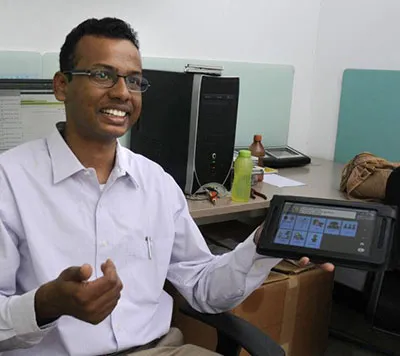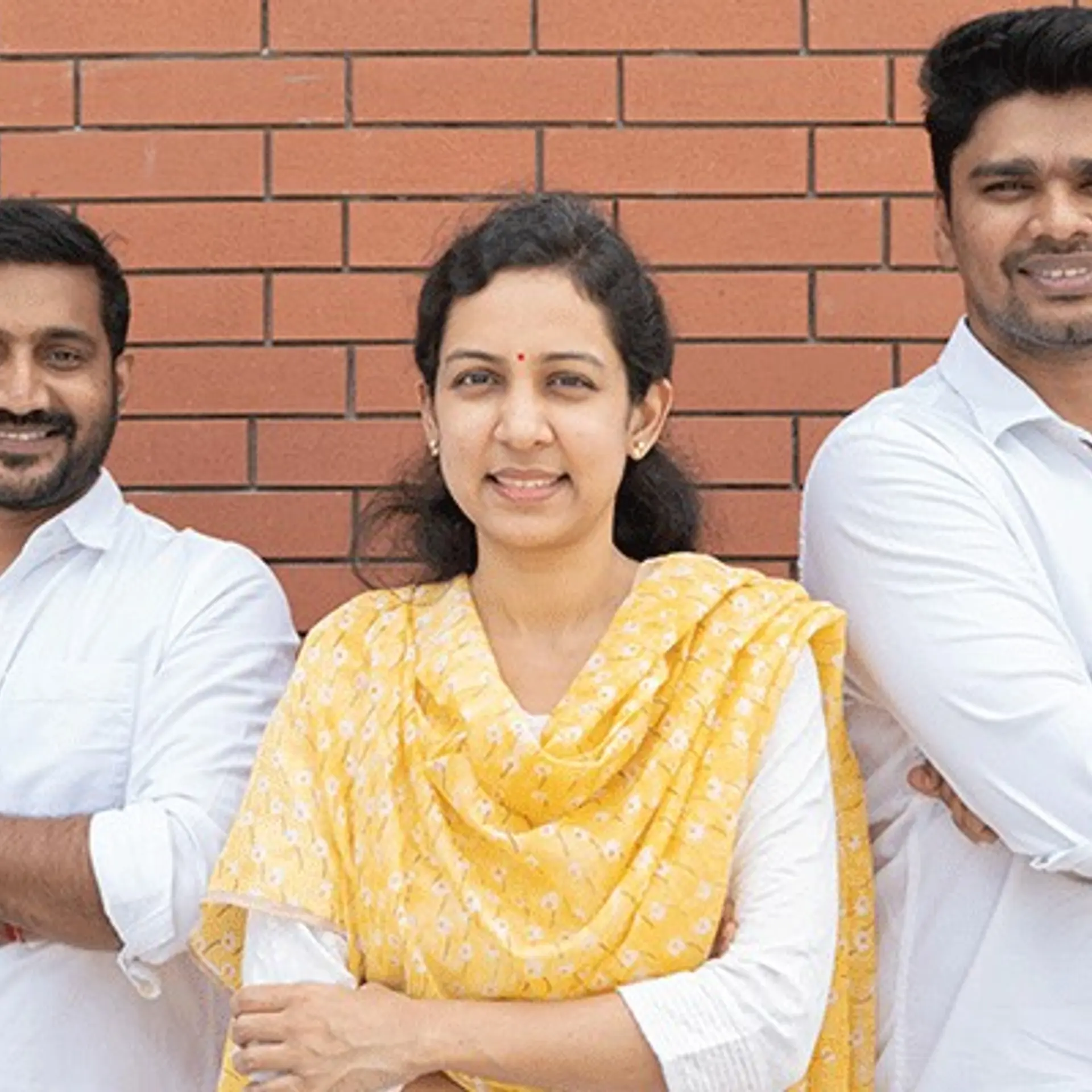How Ajit Narayanan used technology to help autistic children communicate
Founder of Invention Labs, Ajit Narayanan, takes engineering seriously and has built Avaz, India’s first augmentative and alternative communication device for autistic children. Invention Labs is a MobileSparks 2013 company and Ajit is also the winner of ‘MIT Technology Review’, TR35 Award in 2011.

YourStory caught up with Ajit at TEDx BITS Goa and spoke to him about his journey with Avaz.
YS: What was the inspiration behind creating Avaz?
Ajit: I always wanted to solve real social problems. After working in the US for several years, I came back to India in 2007. At that time my friends were volunteering at special schools in Chennai so I also joined them and worked closely with children with special needs. I thought building an alternative communication for them would be an interesting technical problem to solve. It was a combination of seeing the problem first hand and being able to conceptualize a solution which is innovative and relevant to the problem.
YS: What do you feel about the public and governments response to Avaz?
Ajit: It's been great. We have changed a lot of lives in India, but the vast majority of Avaz users are outside India. The US is our largest market, apart from Denmark, Italy and Australia. A number of foreign markets are very proactive in adopting Avaz. There are significant differences in each of these countries; in the US, Italy and Australia there is government funding for these things. Outside India, there is government support for inclusion of children with disability.
Many of these children are very intelligent. We've been lucky that we've had the opportunity to bring out the genius of many of these children, and people in general have been very sympathetic about that.
YS: As an engineer, did you also research on other subjects to develop Avaz?
Ajit: Absolutely. The bulk of my research right now is in internals and mechanics of languages in some sense. I am not exploring language with the aim of writing a scientific thesis but because I have a very specific problem to solve. The skill set I learned as an electrical engineer helped me with respect to that (building the framework for Avaz). I think I have been able to learn faster because of that.
YS: Autism is difficult to detect at an early age, by the time parents realize that their child is autistic, it’s too late. What do you suggest parents do instead of just dismissing it as a learning disability?
Ajit: Actually autism is not very difficult to detect by the age of about two. For example, if the child is unable to talk or does not show any interest in talking till the age of two, then it demands a checkup. Repetitive behavior like stacking things on top of one another are possible signs of trouble.
Many times parents intuitively know something is wrong with their child but remain in denial. They don't understand that early intervention can result in lot of benefit for the child. Unfortunately, that's the case. I think it's more of an awareness problem than knowledge itself.
Having said that, nowadays lot of research is going on in early detection of autism and it may even be possible at some point in the future to detect it before the child is even a few months old, this would change the way in which therapy is provided to children when they are very young.
YS: What challenges did you face from the technology perspective? You are an engineer, did you have to study biology for this?
Ajit: No, not at all, see I am not building a drug for autism or anything like that. I am building a technology solution to help a child with autism speak. That's like saying that if you are building a car for doctors, you'd have to learn medicine.
Technical challenge was not on these fronts, it was in a different direction. The point is that these children use pictures to communicate, and pictures have several limitations. There are several instances and limiting factors like this, which is the main reason that children with autism have not been able to get the full benefit of communication.
Our challenges has mainly been in creative thinking, to understand what exactly should be done to get the children to communicate better. Coming up with new systems of teaching and communication-- that's where the challenge has been.
If I had to design a bicycle for you, I can ask you what kind of bicycle you want, make it and ask your feedback. Here, I am trying to build a system for communication which works, but I also need their feedback. And that is a challenge.
YS: How did you try to overcome it?
Ajit: Very often the child would use Avaz itself to give feedback. Many times the parent, therapist or the teacher have to act as intermediaries. Based on their understanding of child they would try to interpret what he feels about something.
YS: The success of Avaz is mainly because it was really cost effective…
Ajit: (Interrupts) No that's not the case, the success of the Avaz is primarily outside India, where cost was never a constraint. The success of Avaz is because it helps children communicate better than any other technology that exists today.
YS: What other social issues do you feel strongly about?
Ajit: I feel strongly about disability in general, there is a lot to improve with respect to attitude towards disability in India. Unfortunately, many people pity those with disabilities.
I think this attitude has actually harmed more people with disabilities than it has helped. Outside India, the question is not how to help them, but how to help them help themselves. Underlying philosophy is that a child with disability can do anything, which someone without disabilities can do but they have to be given the right tools to be able to do it. I am wearing glasses and talking to you. I was able to get past that disability in some sense, just because of a technology aid.
The idea that ‘these children need to be treated differently’, has to change. They have to be given all the assistive technology needed and have to be treated like regular kids, go to normal schools and play with normal kids.
I also feel very strongly about (the way) engineering is being used in India, that is one of the reasons I started Invention Labs, the whole idea was that if you look at countries like the US, Japan or Germany, these countries basically have a history of engineering; a tradition of inventions and inventing.
When society faces a problem, engineering is the first place to look for a solution. If you have dirty roads in the US, somebody will invent a machine to clean the roads better. In India, we are very far from that, if we have dirty roads in India we either look for some politician to step in and do something, hiring more people to clean the road or running awareness campaigns to keep the roads clean. We look at technology as the last resort.
We don't have enough inventors in our country who are looking at our problems and seeing how to solve them with technology.
YS: What are your future plans, where do you see yourself 20 years from now?
Ajit: I don't think I can really look that far, but I would like to build a successful company, that's the first and most important thing at this stage for me. I have already proved myself as an engineer and inventor, to prove myself as an entrepreneur is little more challenging. Apart from making a successful product, I want to make wealth for my employees, investors and stakeholders. That is my number one priority right now. We are getting there, that journey is taking me a little longer than the technology journey.







